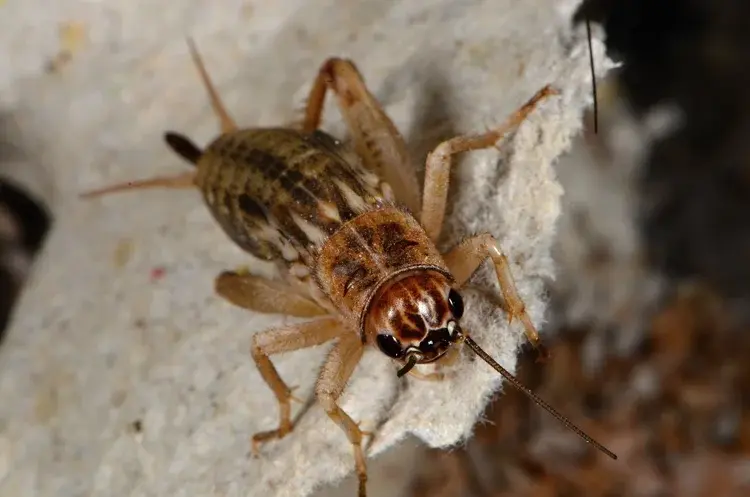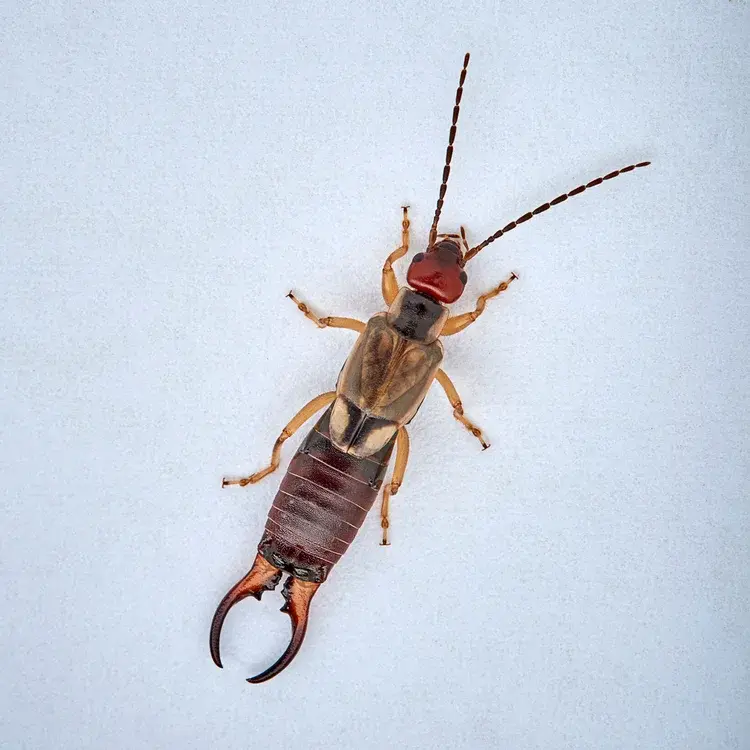
Adult Indian Meal Moth

Adult Larva Pupa
new.jpg)
Indian Meal Moth Webbing and Infestation.
This species of moth is a highly prevalent food storage pest. Indian meal moths are found worldwide in any areas where food is stored, such as grocery stores, food storage warehouses and home pantries. Indian meal moths go through several life stages, each stage having its own level of damage to your stored food in your home. When in the larval stage, there is destruction of basically any dried food stuffs including but not limited to grains, crackers, dried fruits, seeds, nuts, pasta, and dog food. During the moth stage is when people typically realize they have an issue, because they begin to see the moths flying around as they are attracted to light. When in moth stage, they are actively causing damage to food stuffs, but they are reproducing. Since treatment of these insects involves the handling of food, treatment options are limited. For that reason, treatment of this insect falls on your own shoulders, but with these steps the eradication of this pest is fairly easy if handled quickly.
new.jpg)
Silverfish
new.jpg)
Silverfish actively feeding on a book.
new.jpg)
Silverfish damage on improperly stored valuables.
Silverfish are fish-shaped wingless insects that have long antennae and three whisker-like appendages at the end of their body. While Silverfish can nest anywhere in the home, they prefer to nest in garages and attics where their food sources are stored. The silverfish’s diet typically consists of cellulose products which includes paper, books, cardboard, cotton clothes. Their main threat to your home is the destruction of your personal belongings including old photos and important documents as they can ruin the surface of paper. Silverfish can live long periods of time without food and lay their eggs in hidden areas, making it necessary for a professional pest technician for the elimination of silverfish. There are ways to be productive to prevent further infestations, by making a few changes to your home.
· Install weather stripping around doors and windows.
·Put all cellulose based products in sealed plastic totes and dispose of cardboard boxes
·Reduce humidity of areas that might possibly be affected by silverfish

Crickets are extremely hardy and can survive harsh temperatures and drought.

Field Crickets can grow to almost and inch in size.

new.jpg)
Crickets are active during the night, and spend most of their days hiding in dark, warm places. Not only do crickets produce an incessant sound, but they also can cause damage to a multitude of items found in and around your home. When the weather is warm, crickets are found nesting outside and feeding on plant matter and insects. When the temperature drops, crickets find their way inside homes where they can cause damage to fabrics (including wool, cotton, silk, and synthetics), and carpeting and cellulose products (paper and cardboard). With the approach of cold weather, they seek shelter indoors in places where they seek areas of moisture and warmth such as garages, furnace closets, and near water heaters.
·Keep your yard mowed and flower beds that are close to structure clean to prevent areas of nesting and feeding
·Adjust sprinklers to not have excess moisture near structures
·Change exterior lights to non-attracting bulbs
·Properly screen garage vents, doors, and windows
·Install weather stripping around doors, windows, and garage car door
·Seal holes around wires, conduits, pipes, and other holes leading into structure
Despite their menacing appearance, these insects do not pose any harm to humans or pets, but will destroy landscaping. Their long ‘pinchers’ are only sensory appendages and can not cause physical harm. Earwigs are nocturnal, and live together outdoors in large numbers where they feed on live and decaying plant matter. They can be found nesting and feeding under piles of yard waste where they attempt to gain entry to a structure through exterior cracks looking for a heat and moisture source.
·Clean up yard waste, including leaf and mulch piles, and other vegetation.
·Seal up cracks and crevices to prevent structural entry.
·Check under sinks for leaks in plumbing (moisture will cause rotting on the bottom of the sink which will provide the earwigs with food and harborage).
·Adjust sprinklers to not have excess moisture near structures.
·Be sure to drain excess water from potted plants.

1601 Chicago Ave.
Riverside, CA 92507
Monday - Friday
8:00 am - 5:00 pm
Phone: 1 (877) 535-4833